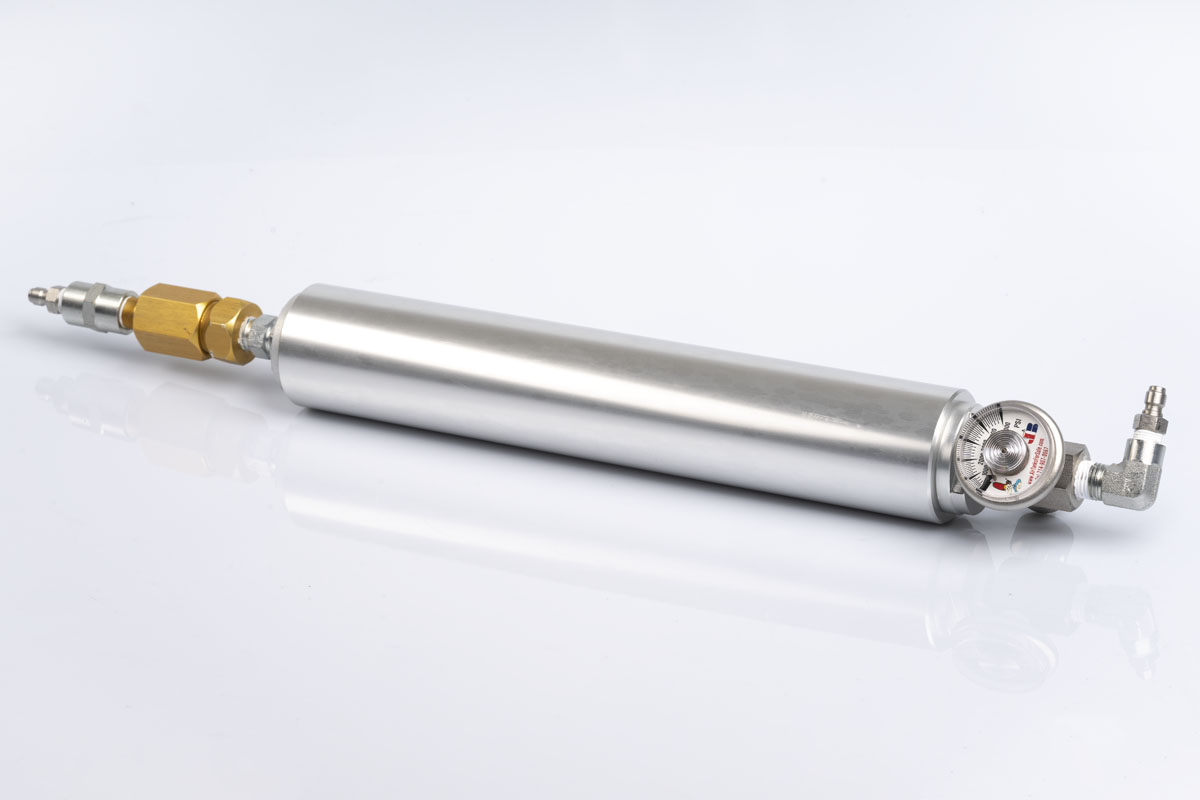@BackStop - your understanding of RH and dewpoint is correct, but
@elwoodblues is not wrong . . . .
As you point out, there is a relationship between temperature, Relative Humidity, and dewpoint - change one and the others change. But the problem with them in our application is that they are all looked at at the same pressure, and we are dealing with changes in pressure. With that in mind, I prefer to work in terms of "absolute humidity" - specifically, the amount of water vapor contained in air under different conditions. This speaks to amount of water vapor that the air contains (thus the air charge temp has to be at or above the dewpoint for that amount to exist), and can be referenced as parts per million or grams per cubic meter. I like to use grams per cubic meter of air, all referenced at one atmosphere of pressure (meaning not a cubic meter of compressed air, even if reference as compressed) since it translates directly into the cubic centimeters of liquid water that could exist if it all were to condense out. for the rest of this, whenver I talk about grams of water I am meaning grams of water vapor in 1 standard cubic meter of air
Let's assume that we are dealing with the air you are feeding into your compressor being at 67 degrees F and at 10% RH. That would mean that every cubic meter of air can carry 1.5 grams of water vapor into your compressor. While that is far below the 5.4 grams that would be in air that that is 67 degrees F and 32% RH, or the 11.1 grams that would be in air that is 78 F and 45% RH, it is still too much for out needs without additional filtering post compression - which you do, so that is good.
Air that is compressed to 3000 psi and is at 67F can only hold 0.08 grams of water vapor - but here is the key thing: air coming out of a compressor is higher than that, and that higher temperature air can hold more water vapor. And that vapor will condense out later when the temperature drops to ambient, which in this case is 67 F.
I don't know how hot your air charge is, but it certainly is a lot higher than the readout on the compressors, given that the compressors have active cooling and the heat of compression is the source of the heat - the air charge must therefore be higher than the cooled compressor head.
Yong Hengs routinely seem to run above 50 C (and spike horribly is the water flow is disrupted), so maybe the air charge is 70 C or so? What does that mean? Well, 70 C air at 3000 psi can hold 1.2 grams of water vapor. Drop the temp to 40 C (since the CS4 seems to run slower and cooler) and that same air charge can hold 0.3 grams of water vapor.
Without additional drying, those air charges would result in roughly 1.1 and 0.2 grams of condensed liquid water ending up in the tank/reservoir for every standard cubic meter of air compressed. While that will vary by the size of the reservoir, that is probably about 15 fills of most tube PCP air reservoirs.
Somebody using your pre-filter (air at 67 F and 10% RH) feeding a Yong Heng would probably think they were in great shape from a water vapor standpoint because they likely would see nothing come out of their bleed points. But the reality is that all that 1.1 grams of water vapor that was in the air before compression will be in vapor form and make it into the tank.
A properly sized Silica Gel desiccant system will result in air that has no more that 0.07 grams of water water vapor per standard cubic meter, which should work well for most applications of room temperature shooting. For guns that will spend their life being filled and shot in temperatures below freezing, molecular sieve would be a better solution, as that would result in air with only about 0.006 grams of water vapor leaving the filter.
By the way, this all points the the fact that your pre-filter (at least on it's own) is no where near big enough to do the job by itself - the airflow must be just too fast through it. So it is good that you are using a post-filter too.
All this is why I say active drying is very important. But if set up right, there is zero risk of water getting into the tank or reservoir.
For my set up I use a Shoebox compressor and have a huge Wilkerson desiccant drier feeding it, and it gets the air down to where it should be (0.07 grams of vapor) as it flows very little air by volume, given that it is already compressed to 110 psi (and cooled and thus carries about 1.9 grams or so to the Shoebox).




